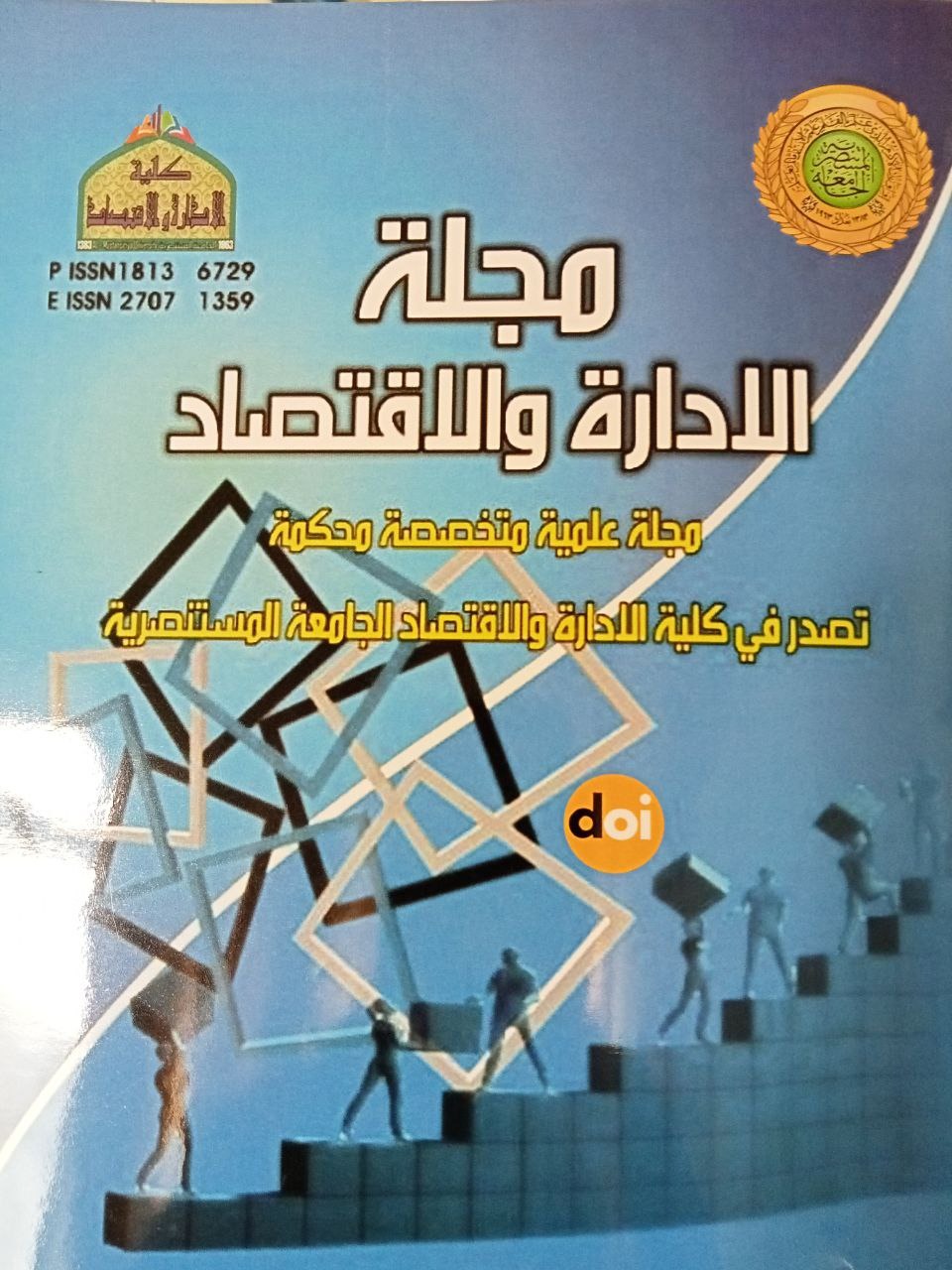Abstract
Measurement and Analysis of Excess Demand Gap in the Iraqi Economy
for the Period 1980-2008
Over the past three decades, the Iraqi economy was exposed to very harsh economic conditions marked by wars and the economic blockade, the results of which were negative economic deterioration in the productive abilities.
An accompanying significant expansion of monetary issuance, which reached great rates exceeded the rates of GDP (gross domestic production) growth, led to a rise in the general level of prices and the deterioration in the Iraqi dinar exchange rate, and, resulted in the growth of a much highe
r total demand rates than the growth rates of the overall supply.
All these circumstances led to what is called macroeconomic excess demand gap for the equivalent of 590% of the total value of the offer.
The discussion recommends achieving an economic balance to overcome the excess demand gap through balancing the level of the total demand, not of the equilibrium level of income, through the harmonization of the total pumping and leakage elements
for the Period 1980-2008
Over the past three decades, the Iraqi economy was exposed to very harsh economic conditions marked by wars and the economic blockade, the results of which were negative economic deterioration in the productive abilities.
An accompanying significant expansion of monetary issuance, which reached great rates exceeded the rates of GDP (gross domestic production) growth, led to a rise in the general level of prices and the deterioration in the Iraqi dinar exchange rate, and, resulted in the growth of a much highe
r total demand rates than the growth rates of the overall supply.
All these circumstances led to what is called macroeconomic excess demand gap for the equivalent of 590% of the total value of the offer.
The discussion recommends achieving an economic balance to overcome the excess demand gap through balancing the level of the total demand, not of the equilibrium level of income, through the harmonization of the total pumping and leakage elements
Abstract
تعرض الاقتصاد العراقي طيله العقود الثلاثة الماضيه لظروف اقتصاديه قاسيه جدا والتي تمثلت في الحروب والحصار الاقتصادي والتي كانت من نتائجها الاقتصاديه السلبيه تدهور في قدراته الانتاجيه.
ورافق ذلك التوسع الكبير في الاصدار النقدي حيث بلغ معدلات كبيره تجاوزت معدلات نمو الناتج المحلي الاجمالي ما نتج عنه ارتفاع في المستوى العام للاسعار وتدهور في سعر صرف الدينار العراقي ونتج عن ذلك ان معدلات نمو الطلب الكلي كانت تفوق بكثير معدلات نمو العرض الكلي لذلك ظهرما يسمى بالاقتصاد الكلي فجوه فائض الطلب لما يعادل 590% من قيمه العرض الكلي ويوصي البحث بتحقيق التوازن عند مستوى الطلب الكلي وليس عند مستوى الدخل التوازني من خلال الموائمه بين مجموع عناصر الضخ والتسرب يمكن تحقيق التوازن الاقتصادي واختفاء فجوه فائض الطلب .
ورافق ذلك التوسع الكبير في الاصدار النقدي حيث بلغ معدلات كبيره تجاوزت معدلات نمو الناتج المحلي الاجمالي ما نتج عنه ارتفاع في المستوى العام للاسعار وتدهور في سعر صرف الدينار العراقي ونتج عن ذلك ان معدلات نمو الطلب الكلي كانت تفوق بكثير معدلات نمو العرض الكلي لذلك ظهرما يسمى بالاقتصاد الكلي فجوه فائض الطلب لما يعادل 590% من قيمه العرض الكلي ويوصي البحث بتحقيق التوازن عند مستوى الطلب الكلي وليس عند مستوى الدخل التوازني من خلال الموائمه بين مجموع عناصر الضخ والتسرب يمكن تحقيق التوازن الاقتصادي واختفاء فجوه فائض الطلب .
